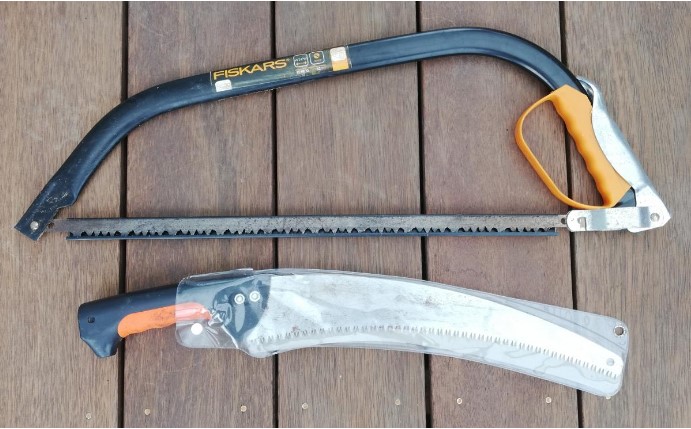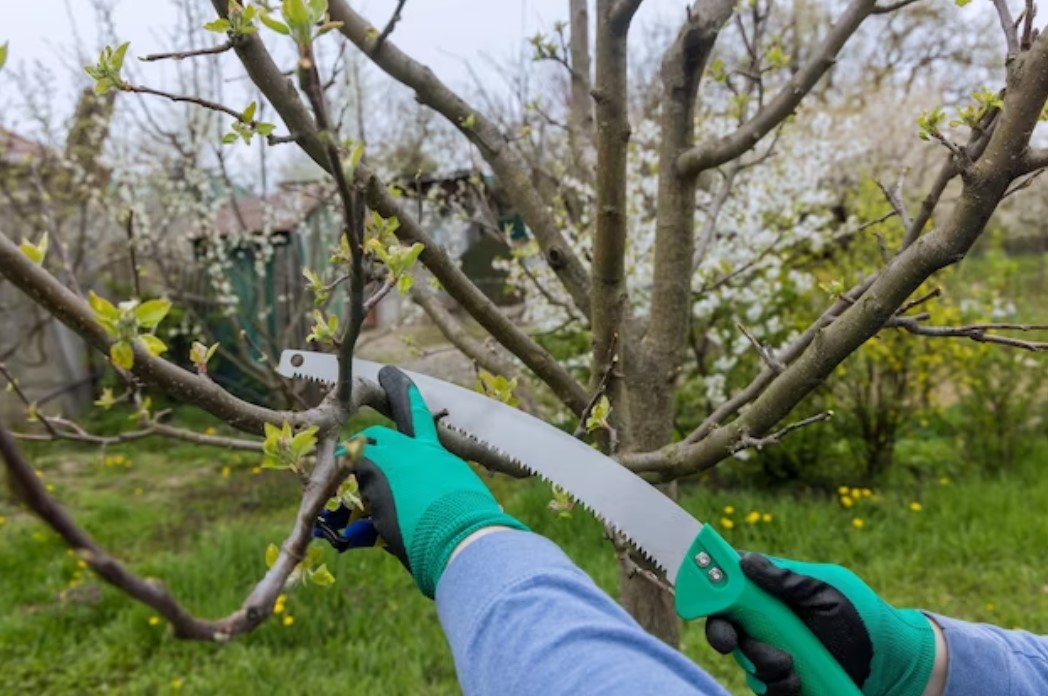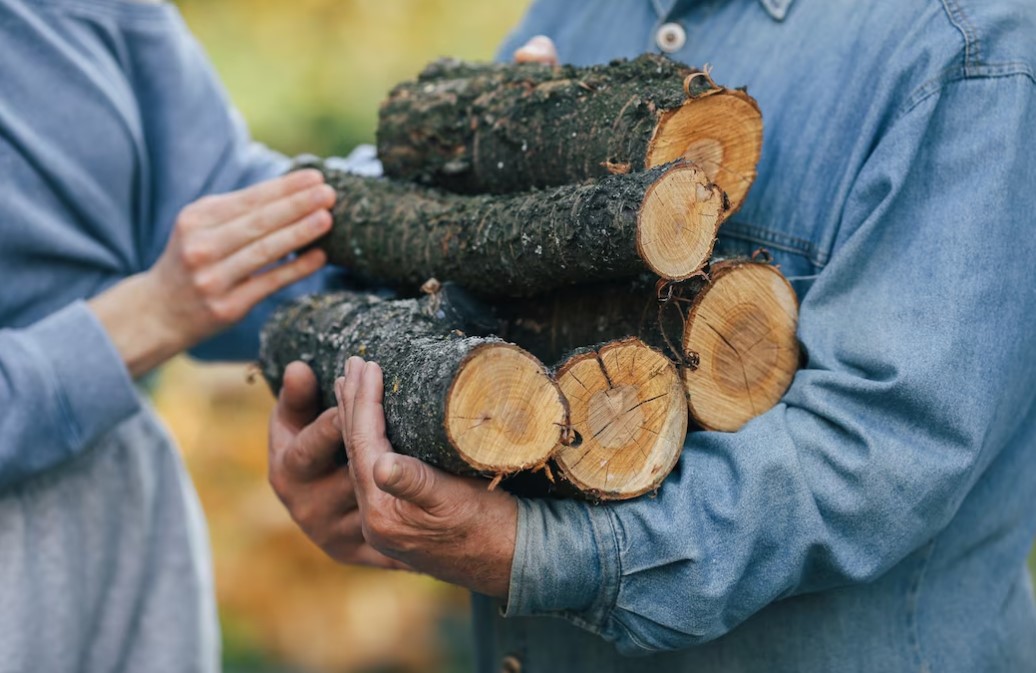Bow Saw vs Pruning Saw: Choosing the Right Tool for Tree and Branch Cutting
If you’re a green-fingered homeowner, you might be unsure of which instrument to use for gardening tasks: a bow saw or a pruning saw. Both saws are excellent for cutting branches and trees, but they each have particular features, advantages, and restrictions. Join us as we break down the features, advantages, and best-use scenarios for each type of saw, empowering you to make an informed decision that aligns perfectly with your specific cutting requirements. Embark on this journey of comparison and discovery, and equip yourself with the knowledge needed to make a confident choice between Bow Saw vs Pruning Saw. Your cutting projects are about to receive a significant boost, so let’s dive in and explore the world of these essential cutting tools.
Why Should You Care About Their Differences?
Understanding the differences between Bow Saws and Pruning Saws holds paramount importance when it comes to selecting the perfect cutting tool for your specific needs. While these tools may appear similar at a glance, delving deeper into their nuances can significantly impact the outcome of your cutting projects.
First and foremost, safety stands as a crucial factor. Each saw type possesses distinct features that cater to different safety considerations. Being aware of these distinctions ensures that you can choose the tool that aligns with your comfort level and minimizes potential risks during operation.
Furthermore, efficiency and precision are key contributors to the end result of any cutting endeavor. The variations in design, blade configuration, and ergonomics between Bow Saws and Pruning Saws directly influence their performance on different materials and tasks. By discerning these disparities, you can optimize your cutting process, reduce effort, and achieve more accurate cuts, saving both time and resources.
Price is another compelling reason to care about the differences between these saws. Investing in the wrong tool can cause to unnecessary expenditures and replacements. By equipping yourself with knowledge about the unique attributes of Bow Saws and Pruning Saws, you can make an well-informed decision that aligns with your budget and ensures a long-lasting, cost-effective solution.

Key Differences Between Bow Saw Vs Pruning Saw
Design
- Bow Saw: The frame’s bow form enables saw blades to be pulled taut while being disengaged and attached. Using a bow saw, cut tree branches.
Two hands are used to handle the bow saw; one hand pushes and pulls from the back of the bow while the other hand presses down to keep the bow in contact.
- Pruning Saw: The pruning saw has a blade that is a part of the handle, similar to traditional handsaws. Typically, a pruning saw is operated with one hand on the handle; however, if necessary, a second hand may be placed on top of the blade to apply pressure.
Simply defined, the difference between bow saw vs pruning saw is akin to that between a hacksaw and a handsaw in terms of form and shape.
The pruning saw is made to cut branches with the least amount of disruption. Thus that is a significant distinction. Pruning saws allow you to cut branches that are too tough to reach with a bow saw, whereas bow saws are used to simply cut wood that is easy to access.

Purpose
Both saws are used to cut wood, but the pruning saw is made expressly to remove small tree branches, which is a significant distinction.
Bow saws are made to cut bigger pieces of dry and green wood. Although it can be used to trim small tree branches, its primary use is to cut through larger chunks of wood.
Blades
The fact that a bow saw has interchangeable blades, whereas a pruning saw just has one fixed blade, maybe the most noticeable distinction. It is quick and simple to change a blade if the bow saw’s blade becomes dull or if you need to.
A single fixed blade on the pruning saw cannot be changed (at least not easily). The blade is often thicker, but this makes it easier to use one-handed, especially when trimming branches in awkward places or when balancing on a ladder.

Cutting Action
Bow saws have another distinction in that they can cut using both push and pull strokes. Contrarily, the majority of pruning saws are cut using the draw stroke.
Speed & Precision
Because the blade is fastened at both ends, the bow saw usually produces perfect cuts. As a result, there is little to no blade deflection.
Additionally, the bow frame enables better two-handed control during cutting.
The bow saw works fairly well for chopping up bigger pieces of wood, especially in terms of speed when you have enough space to work.
Due to their one-handed usage, pruning saws, which predominantly cut on pull strokes, may be slower and appear to offer less control. However, by allowing the other hand to be free to steady the branch, this one-handed design can actually improve precision for more minute, exacting jobs. A pruning saw frequently replaces a bow saw as the tool of choice for cutting in small spots where a bow saw cannot fit.
Portability
Compared to pruning saws, bow saws are often larger and heavier to carry. Additionally, many pruning saws include handles that fold into the blade when not in use, making them smaller and more portable.
Which one you choose will depend on the tasks you intend to complete. A bow saw is ideal for swiftly and, more precisely, cutting dry or green wood.
For smaller, harder-to-reach branches, the pruning saw is more appropriate. The pruning saw is a better option for trimming trees and bushes.

Maintenance and Care
Bow Saws: After each use, it’s important to clean and thoroughly dry the blade to prevent rust. Additionally, make it a habit to periodically assess and adjust the tension in the blade. This proactive approach to maintenance will not only enhance the performance of your bow saw but also extend its lifespan considerably.
Pruning Saw: A pruning saw needs to be sharpened for precise cuts and cleaned after each use to prevent sap buildup. For safe storage, don’t forget to fold it back into the handle or install a blade guard.
Which Tool to Choose: Bow Saw or Pruning Saw?
When faced with the decision of choosing between Bow Saw vs Pruning Saw, several crucial factors come into play, each influencing the suitability of the tool for your specific needs.
Task Requirements
The nature of your cutting tasks is a pivotal determinant. Bow Saws excel at tackling larger branches and logs with their sturdy frame and aggressive teeth, making them ideal for heavier-duty tasks. On the other hand, Pruning Saws shine when precision and finesse are paramount, excelling in delicately trimming small branches and dense foliage.
Workspace
You consider the environment in which you’ll be operating. Bow Saws, with their longer blade and extended reach, are better suited for outdoor, open spaces where maneuverability isn’t a concern. Pruning Saws, with their compact size and versatile designs, are better suited for tight or confined spaces.

Frequency of Use
Your frequency of tool usage plays a role in your decision. If you’re a frequent user tackling various cutting projects, a versatile Pruning Saw might be your go-to choice. However, if cutting is a sporadic task, a Bow Saw’s robust construction could prove more durable over time.
Choose the Right Tool Based on Your Need
The key takeaway is that neither tool is universally superior; rather, their strengths lie in different applications. Analyze your specific cutting needs, whether they involve heavy-duty branch removal or precise pruning, and choose accordingly. By aligning your choice with your requirements, you ensure efficient and effective results while maximizing the utility of your chosen tool.
Safety Considerations
Bow Saw
Wear gloves when operating a bow saw to prevent hand slips, especially if the saw doesn’t include knuckle protection. Additionally, I advise you to put on protective goggles to stop dust or wood chips from getting into your eyes.
Never press the saw into the material during sawing; instead, maintain a firm posture.
Pruning Saw
Once more, I highly advise using gloves and safety eyewear. Use a ladder with the right safety features and place it securely if you’re working at a height.
Finally, when not in use, fold the blade back into the handle or cover it with a blade guard.

FAQs
What is the main difference between a bow saw and a pruning saw?
Bow saws typically have longer blade with larger teeth, making them suitable for cutting larger branches and logs. Pruning saws, on the other hand, have a shorter blade with finer teeth designed for precision trimming of smaller branches and dense foliage.
Can I use a bow saw for pruning tasks?
While a bow saw can technically be used for pruning, its larger size and teeth make it less suitable for delicate pruning tasks. Pruning saws are specifically designed for such tasks, offering better control and precision.
Which saw is better for cutting thicker branches or logs?
If you’re dealing with thicker branches or logs, a bow saw is a more appropriate choice. Its longer blade and aggressive teeth are designed to handle heavier cutting tasks.

Are there safety precautions I should follow when using these saws?
Yes, safety is paramount. Always put on the proper safety gear, such as gloves and goggles. Ensure a secure grip on the saw handle, and be mindful of your body positioning while cutting. Clear the area of obstacles before cutting, and use caution to prevent kickback.
What should I consider when choosing between the two saws?
When choosing between bow saws vs pruning saws, consider factors such as the size of the branches you’ll be cutting, the level of precision required, the workspace available, and your frequency of tool usage. Match the tool’s characteristics to your specific cutting needs for optimal results.
Conclusion
As you embark on your cutting endeavors, armed with the insights garnered from this comprehensive comparison, you’ll be equipped to confidently select the tool that best complements your needs. Through careful consideration and an understanding of their distinctions, you’re primed to achieve success in your cutting tasks, elevating your craftsmanship and achieving the desired outcomes. “Choosing the Best Tool for Your Cutting Needs: Comparing Bow Saw Vs Pruning Saw” serves as your guide on this journey, enabling you to make a selection that’s tailor-made for your cutting aspirations. Remember that the right tool can make a world of difference in the quality of your results and your overall cutting experience.
Related Articles